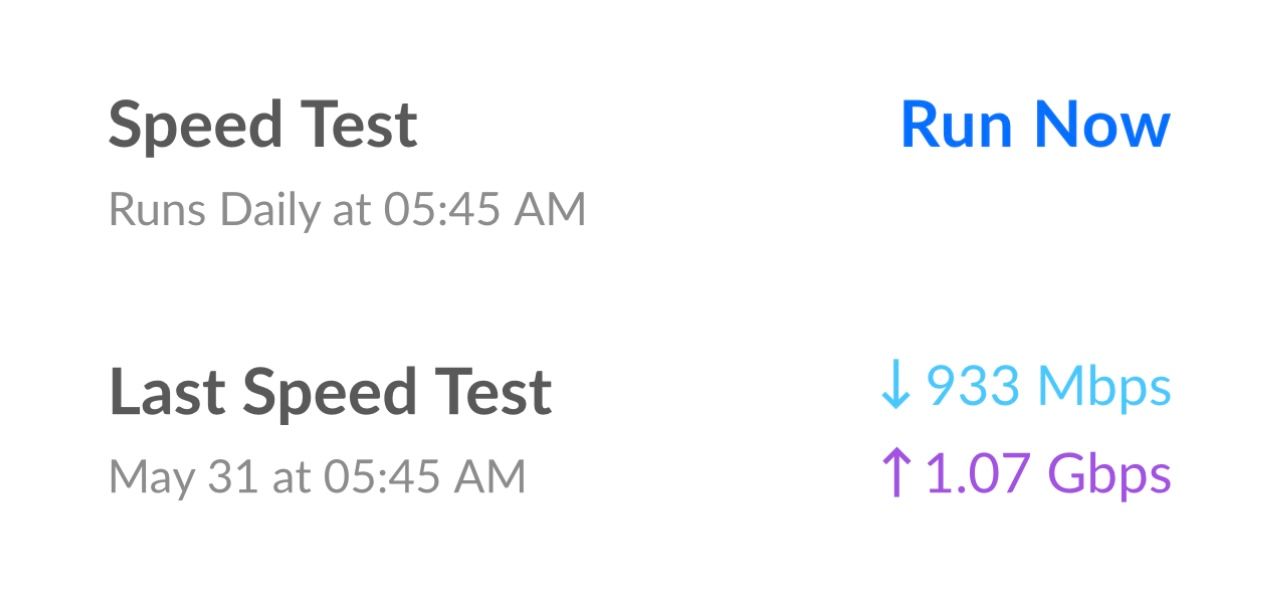ATT Uverse RG Bypass (0.2 BTC)
-
@t41k2m3 Nope, this is just me using ifconfig to tag the WAN interface with pcp7 traffic trying to get an 802.1x auth without using netgraph.
https://github.com/MonkWho/pfatt/issues/79
You can see in the above discussion that someone was able to make this work but they did not have an intel NIC.
They were using a Marvell NIC and an ARM proc.
-
@bigjohns97 @GPz1100 or others - has anyone experienced issues with pfatt - ngeth0 and wpa supplicant post upgrade to 23.05? At bootup it seems to be trying to assign ngeth0 to WAN before ngeth0 is created via the earlyshellcmd script. Bootup therefore gets stuck waiting for manual interface assignment. That was not the case in 23.01 and earlier. Short of adding a switch or (new) modem/RG bridge options in 23.05, any thoughts on how the old setup could be kept running?
-
@t41k2m3 said in ATT Uverse RG Bypass (0.2 BTC):
@bigjohns97 @GPz1100 or others - has anyone experienced issues with pfatt - ngeth0 and wpa supplicant post upgrade to 23.05? At bootup it seems to be trying to assign ngeth0 to WAN before ngeth0 is created via the earlyshellcmd script. Bootup therefore gets stuck waiting for manual interface assignment. That was not the case in 23.01 and earlier. Short of adding a switch or (new) modem/RG bridge options in 23.05, any thoughts on how the old setup could be kept running?
Sorry I moved over to the stripper switch method to get rid of the complex ngeth0 scripts so I can't comment on this.
Would still love to run native using PCP 7 but waiting on the wpa supplicant to be patched to be able to support VLAN 0.
-
In 23.05 you can remove both and use the native ether bridge-to rules instead:
https://docs.netgate.com/pfsense/en/latest/recipes/authbridge.htmlWith the router authentication at least. If you're using the cert directly that doesn't apply.
Steve
-
@stephenw10 I am using certs, for those using certificates we have to wait for the wpa supplicant to be patched like the dhclient was recently.
-
@t41k2m3 yes .. same issue.
Every upgrade is a new surprise. I was so excited for this one because we were SO close to using the supplicant without netgraph. It appears interfaces are now assigned before the earlyshellcmd scripts are ran, so it's broken for me. Having to use another workaround at the moment.
edit: switched to the new GUI supported pass-through method and it's working well so far!
-
@bigjohns97 said in ATT Uverse RG Bypass (0.2 BTC):
Sorry I moved over to the stripper switch method to get rid of the complex ngeth0 scripts so I can't comment on this.
Would still love to run native using PCP 7 but waiting on the wpa supplicant to be patched to be able to support VLAN 0.
Could not get stripper switch to work on pfs 23.05 (one of the switches from https://github.com/MonkWho/pfatt/issues/82). EAP auth succeeds but will not get DHCP address. Might that depend on FTTN/FTTH and ISP upstream setup (hence why certain switches seem to work for some but not all)?
-
@t41k2m3 Does pfatt with netgraph work for you? I would expect a stripper switch to work as well then.
I haven't tested 23.05 yet, but 23.01 worked just fine with the switches mentioned in the https://github.com/MonkWho/pfatt/issues/82 thread.
If pfatt/netgraph works, verify you're using the correct mac for the wan.
-
@GPz1100 said in ATT Uverse RG Bypass (0.2 BTC):
@t41k2m3 Does pfatt with netgraph work for you? I would expect a stripper switch to work as well then.
I haven't tested 23.05 yet, but 23.01 worked just fine with the switches mentioned in the https://github.com/MonkWho/pfatt/issues/82 thread.
If pfatt/netgraph works, verify you're using the correct mac for the wan.
I'm on 23.05 and using stripper switch (5 port) successfully. Didn't have to change anything going from 23.01 to 23.05.
-
Do any of you have this to working with the newer AT&T gateways with a built-in ONT?
-
 S stephenw10 referenced this topic on
S stephenw10 referenced this topic on
-
Hi folks, I'm crossing over from a post I made in the general forum: Quirky bypass on 22.05 with AT&T fiber
-
I've got the 'official' bypass working with 23.05 and a BGW210, but my pfsense bootup is now quite a bit longer. It's taking about 75 seconds at "configuring wan interface" when it used to take just a few seconds before I performed the bypass.
-
The RG's LED indicator for 'broadband' flashes green while PFsense is booting, but then switches to flashing red after a few minutes, despite the baypass working and having full connectivity on my connection. This is a lesser issue, but I'm just confused by it.
I appreciate any insight as to why the wan config is taking so much longer, or why the RG wouldn't seem to detect the broadband connection. Thanks in advance!
-
-
@darkphox said in ATT Uverse RG Bypass (0.2 BTC):
Hi folks, I'm crossing over from a post I made in the general forum: Quirky bypass on 22.05 with AT&T fiber
-
I've got the 'official' bypass working with 23.05 and a BGW210, but my pfsense bootup is now quite a bit longer. It's taking about 75 seconds at "configuring wan interface" when it used to take just a few seconds before I performed the bypass.
-
The RG's LED indicator for 'broadband' flashes green while PFsense is booting, but then switches to flashing red after a few minutes, despite the baypass working and having full connectivity on my connection. This is a lesser issue, but I'm just confused by it.
I appreciate any insight as to why the wan config is taking so much longer, or why the RG wouldn't seem to detect the broadband connection. Thanks in advance!
I have the BGW320-505 gateway which AT&T started installing out about two years ago when I moved last. I’m curious if your method will work on mine. The ONT module is built-in, so they ran the fiber line directly to the back of the modem with an SFP module.
-
-
It's possible the authentication always takes a while but you wouldn't normally see that because the AT&T router does it before pfSense even connects in the double NAT setup. In the bypass mode the auth can only start once pfSense bridges to the router when it sets up the WAN. It seems unlikely it should take anything like 75s though.....
I don't have an AT&T connection to test. -
Since you can't really eliminate the newer AT&T gateways completely (thanks to AT&T's certificate-based authentication and integrated ONT module), then I don't even see the point of doing this. I just put mine in IP passthrough mode with my public IP going over to pfSense along with my /29 block and I haven't had any issues with latency or dropped packets. AT&T reboot time is still only about 20-30 seconds.
-
Mmm, interesting. Yeah I wouldn't expect the auth to take more than a fraction of a second really. Let's see if anyone else is seeing a delay there.
-
@stephenw10 Just to clear up any confusion, when I said 20-30 total reboot time, that is basically from powered off to a solid green light on the gateway. IP Passthrough mode (essentially bridging) does not add any additional time to the reboot cycle because it's still doing the auth.
-
@DefenderLLC I understand your sentiment, considering you're still stuck with the gateway using this bypass method. I liked the idea of putting the gateway behind my firewall, but it also made it easier to co-locate my network hardware with an UPS...the ONT is in a weird spot in my house. As a secondary benefit, I've noticed a slight to moderate increase in overall performance.
I've yet to see a speedtest actually reach full gigabit speed, but before the bypass I'd hit around 800Mbit with latency of 15 to 20 ms. After the bypass I'm hitting roughly 920Mbit with 8-10 ms latency. It's minor and surely not noticeable to my dulled senses, but it's measurable.
I haven't accessed the gateway itself since the bypass...Setting it up on a 'modem' interface keeps me from getting at it via the ol' 192.168.1.254, but I may see if I have time to mess around and look into the RG logs if they're easily accessible.
-
@darkphox said in ATT Uverse RG Bypass (0.2 BTC):
@DefenderLLC I understand your sentiment, considering you're still stuck with the gateway using this bypass method. I liked the idea of putting the gateway behind my firewall, but it also made it easier to co-locate my network hardware with an UPS...the ONT is in a weird spot in my house. As a secondary benefit, I've noticed a slight to moderate increase in overall performance.
I've yet to see a speedtest actually reach full gigabit speed, but before the bypass I'd hit around 800Mbit with latency of 15 to 20 ms. After the bypass I'm hitting roughly 920Mbit with 8-10 ms latency. It's minor and surely not noticeable to my dulled senses, but it's measurable.
I haven't accessed the gateway itself since the bypass...Setting it up on a 'modem' interface keeps me from getting at it via the ol' 192.168.1.254, but I may see if I have time to mess around and look into the RG logs if they're easily accessible.
AT&T generally oversubscribes the service, but if you’re using a 1 gig port from the gateway to your LAN of course you’re not going to get any speeds faster than that. Port number 1 (the blue one) is a 5 Gb port on the newer models and will step down to 2.5Gb or 1Gb. Now the ONT modules are built into the modem itself. You have no choice but to use it.
I went back to the one gig service and this is what I get from my UDM-SE which sits behind my Netgate 6100 MAX with IPS enabled on both firewalls (dual NAT).

-
Hey AT&T folks! I'm new here and do want to be frowned at for double posting. I have a AT&T Pace 5268ac and got the new Bypass to work but every 24 hours for ~90 minutes the modem interface drops and reconnects every 2-3 minutes. If you might know how to help please jump over to my post.
Thanks!
-
@DefenderLLC would it theoretically be possible if you had a pfSense box that had a fiber input used as WAN? Unless there's a reason someone is using that same certificate type that's using the Ethernet rule. I don't have either but was curious if someone may have tried that option.